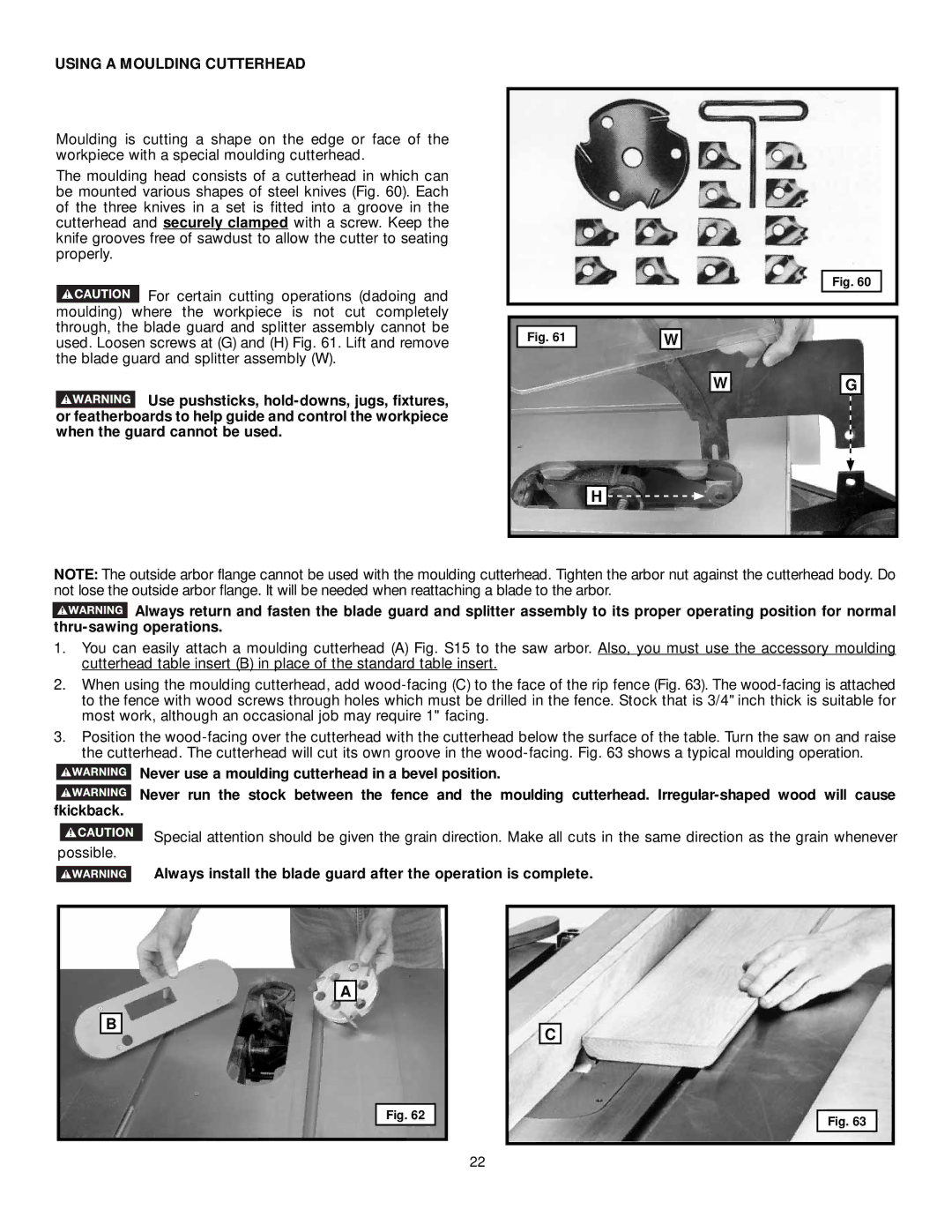
USING A MOULDING CUTTERHEAD
Moulding is cutting a shape on the edge or face of the workpiece with a special moulding cutterhead.
The moulding head consists of a cutterhead in which can be mounted various shapes of steel knives (Fig. 60). Each of the three knives in a set is fitted into a groove in the cutterhead and securely clamped with a screw. Keep the knife grooves free of sawdust to allow the cutter to seating properly.
![]() For certain cutting operations (dadoing and moulding) where the workpiece is not cut completely through, the blade guard and splitter assembly cannot be used. Loosen screws at (G) and (H) Fig. 61. Lift and remove the blade guard and splitter assembly (W).
For certain cutting operations (dadoing and moulding) where the workpiece is not cut completely through, the blade guard and splitter assembly cannot be used. Loosen screws at (G) and (H) Fig. 61. Lift and remove the blade guard and splitter assembly (W).
![]() Use pushsticks,
Use pushsticks,
Fig. 60
Fig. 61 |
|
|
| W |
W |
| G |
|
|
|
H ![]()
![]()
NOTE: The outside arbor flange cannot be used with the moulding cutterhead. Tighten the arbor nut against the cutterhead body. Do not lose the outside arbor flange. It will be needed when reattaching a blade to the arbor.
![]() Always return and fasten the blade guard and splitter assembly to its proper operating position for normal
Always return and fasten the blade guard and splitter assembly to its proper operating position for normal
1.You can easily attach a moulding cutterhead (A) Fig. S15 to the saw arbor. Also, you must use the accessory moulding cutterhead table insert (B) in place of the standard table insert.
2.When using the moulding cutterhead, add
3.Position the
Never use a moulding cutterhead in a bevel position.
![]() Never run the stock between the fence and the moulding cutterhead.
Never run the stock between the fence and the moulding cutterhead.
![]() Special attention should be given the grain direction. Make all cuts in the same direction as the grain whenever possible.
Special attention should be given the grain direction. Make all cuts in the same direction as the grain whenever possible.
Always install the blade guard after the operation is complete.
B
A
Fig. 62
C
Fig. 63
22
